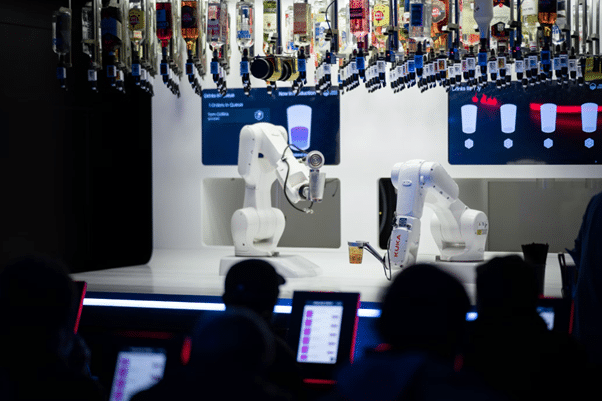Robotics has long since moved beyond the confines of science fiction movies and is now applied in various industries. It is no longer just a tool used in manufacturing, but also an everyday assistant for the general consumer. However, few people consider how this field has evolved and changed over time to reach the point it is at today.
What is Robotics?
Robotics is a branch of engineering and computer science aimed at creating intelligent machines that can assist both businesses and private users in a variety of ways. Additionally, this machine is not only about devices shaped like the human body, as is often imagined, but can also take the form of robotic applications, often interacting with AI.
The origins of the term robotics can be traced back to the early 20th century, and there may be various discussions about the pioneers of this terminology. However, Isaac Asimov is considered one of the first to use this term. According to him, such autonomous devices should adhere to three moral principles, which still hold true today:
- Robots must never harm humans.
- Robots, when following human instructions, must not violate the first rule.
- Robots must protect themselves without violating the other rules.
The first programmable robot, created in 1961, was the Unimate robot, used in manufacturing for moving and stacking hot metal pieces. Its creation marked the beginning of the industrial robotics era. Also, the Stanford Research Institute’s 1966 robot Shakey is considered the first mobile robot with software and hardware that allowed it to perceive its environment to a limited extent.
The concept of robotics has evolved significantly over many decades. Even in ancient Greece, engineering solutions were already being applied to move specific objects using steam power. During the Industrial Revolution, such devices became more common, and the first ideas of task automation emerged – which is what makes robots particularly useful today.
For a long time, robotics was associated only with the industrial sector. However, with the arrival of AI on the market, better data management, and other technological advancements, autonomous machines have expanded and are now present in many sectors, from autonomous transportation to surgical robots.
How and Where Do Robots Work?
The operation of robots can depend on various factors, such as the purpose for which the robot was created and the tasks it will need to perform. This technology can also be of different types, such as industrial robots that carry out various tasks in this sector, like painting or assembly, and are valued for their potential high precision. Humanoid robots mimic human behavior.
There are also autonomous robots, which operate without human intervention. Popular robotic arms are used in both manufacturing and medicine, while four-legged robots are also in use.
These robotic devices are based on various sensors, such as vision, touch, gears, and control systems. With the help of sensors, robots can understand and navigate their environment, while gear and motor systems ensure their movement and action execution. These devices can now also be controlled remotely. Their power systems can include batteries, solar energy, electricity, or fuel cells.
For instance, industrial robots are programmed, and their movements can be controlled via a computer system that programs task instructions. Based on this, there can be open-loop control, where the command sequence is pre-set; closed-loop control, which allows real-time changes based on signals from sensors; and adaptive control, where machines can adapt to highly dynamic environmental conditions.
Considering the various types of robots, they can be applied in various industries. For example, in the manufacturing industry, they work on assembly lines, painting, welding, or handling materials. In healthcare, surgical robots can assist doctors in complex procedures, offering high precision.
In logistics, some delivery companies already use autonomous vehicles to deliver goods, and in the research sector, robots can participate in space missions, deep-sea explorations, and other tasks where humans may be at risk.
Final Word
Thus, robotics has undergone significant changes and evolution to become what we see today. Now, and in the future, robots are expected to be available to a broader market, changing and assisting us in our daily lives, just as robot vacuum cleaners already help with household chores.
If you are interested in this field, we suggest you to check our articles:
- Humanoid Robots Arrive – Elon Musk’s Vision for The Near Future
- Tesla Cybercab and Robovan Release: The Evolution of AI Continues
Sources: Formant, TechTarget, Standart Bots, Telefonica, Wevolver

